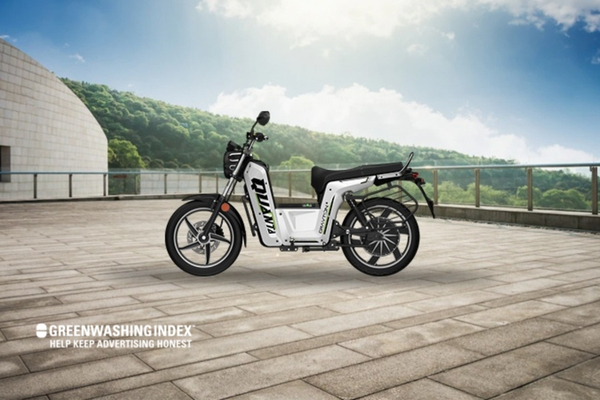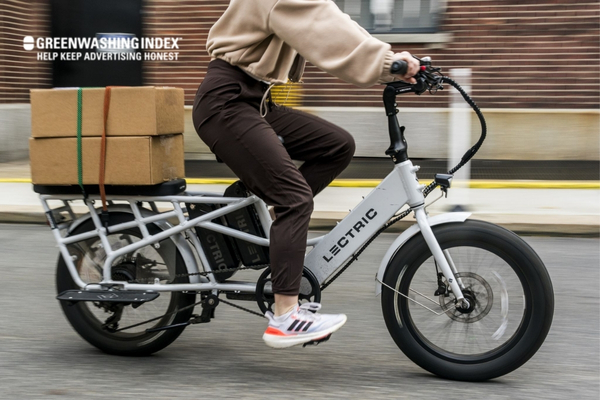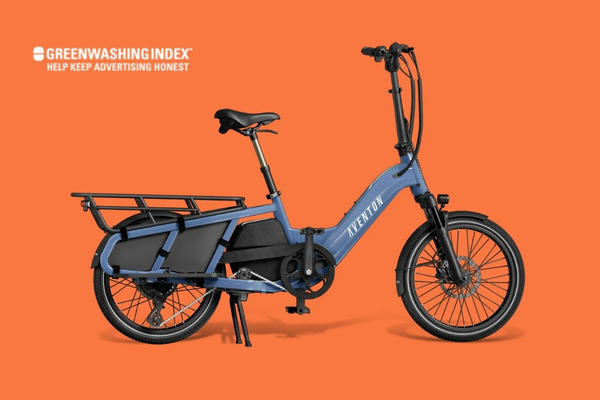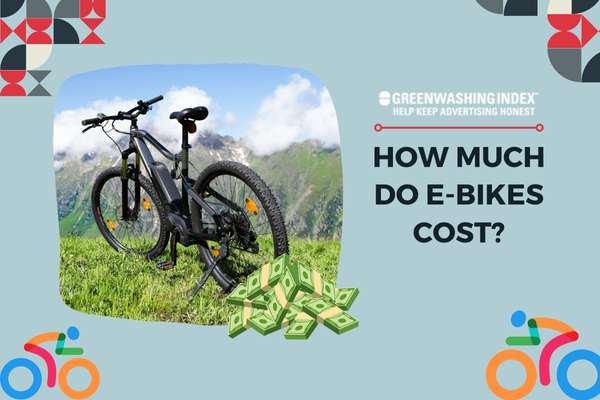When it comes to transforming how we move, E-bikes are at the forefront! From the daily commuter looking to dodge traffic jams to weekend adventurers seeking trails less traveled, electric bikes offer a blend of eco-friendliness and excitement. But there’s a burning question that often pedals through our minds.
How much do E-Bikes cost? Whether you’ve got a savings jar marked ‘E-Bike Fund’ or just daydreaming about an electric future on two wheels, I’ve plugged into this topic to give you the scoop!
You’re probably eager to get down to brass tacks – so here it is: The cost of an E-bike depends on what you’re after. You could find one for as low as $500, but that number can escalate quickly depending on features and quality. Most folks looking for a nice blend of reliability and bells and whistles expect to spend $2,000–$3,000.
But if your heart desires top-of-the-line luxury or specialty models designed for heavy loads or rugged terrain, you might be shelling out anywhere between $6,000 and a breathtaking $80,000! Now that’s electrifying.
Understanding E-Bike Pricing
When I think about how much e-bikes cost, I always like to start by explaining what goes into that price. You see, e-bikes aren’t just regular bikes; they have special parts that make them more like a bike and an electric vehicle all in one.
| E-Bike Type | Price Range | Features | Best For |
|---|---|---|---|
| Cheapest E-Bikes (Ancheer, Ride1Up, MiRider One) | $500 – $2,400 | Basic motor and battery, good for short trips. Some offer folding options. | Budget-minded riders, urban commuters, occasional use. |
| Standard Electric Bicycles | $1,000 – $4,000 | Durable build, reliable batteries and motors, multiple speeds, decent brakes. | Everyday riding, commuting, leisure rides. |
| Cargo E-Bikes | $1,500 – $8,000 | Sturdy frames, high-quality components, designed for heavy loads. | Carrying groceries, transporting kids, delivery services. |
| Off-Road/Mountain E-Bikes | $6,000 – $14,000 | Rugged parts, shock absorbers, top-notch brakes, built for rough terrain. | Trail riding, mountain biking, off-road adventures. |
| Luxury E-Bikes (BlackTrail BT-01, Audi) | $20,000 – $80,000 | High-end materials, advanced technology, powerful motors, long-range batteries. | Speed enthusiasts, tech lovers, luxury experience. |
Here’s a breakdown of the factors that play a big role in setting the price:
- The Motor: This is like the heart of an e-bike. It’s what gives you that boost when you’re pedaling. A stronger and quieter motor usually means a higher cost.
- The Battery: The battery is key—it decides how far you can go on one charge. Bigger, longer-lasting batteries can drive up the price.
- The Frame and Build Quality: E-bikes have to be well-built to handle the extra weight of the motor and battery. Better materials mean more dollars.
- Brand and Model: Just like with cars, some brands are known for luxury, while others are all about value. You’ll pay more for a big-name brand or the latest model.
- Additional Features: Things like digital displays, built-in lights, or GPS tracking aren’t standard on all e-bikes, but you can add them to your bill if you want them.
Understanding these parts will help make sense of why some bikes seem expensive, and others look more affordable.
The Range of Prices
Now let’s talk numbers—how much money should I expect to part with when buying an e-bike? Prices really do range widely; it all depends on what kind of bike suits my style or needs:
- Standard E-Bikes:
- Price Range: $1,000 to $4,000
- These come with good quality components suitable for everyday rides around town.
- Folding E-Bikes:
- Price Range: $1,500 to $4,500
- They have this neat trick where they fold up small enough to carry, which makes them great for folks who take their bike on trains or buses.
- Cargo E-Bikes:
- Price Range: $1,500 to $8,000
- They are designed tougher so they can carry heavier loads without breaking down.
- Off-Road/Mountain E-Bikes:
- Price Range: $6,000 to $14,000
- These are beasts made for rough terrains with extra-strong parts that hike up their price.
- And then there’s the BlackTrail BT-01, which sits alone at a jaw-dropping:
- Price Tag: About $80,000
- Think less bicycle and more elite gear made from spaceship materials!
These prices may seem steep at first glance since we’re used to thinking about regular bike costs—however, after grasping everything that goes into an e-bike’s sticker price—it becomes clear why each one differs as much as they do in cost today.
Also Read: How Much Energy Does A Solar Panel Produce? Find Now!
Types of E-Bikes and Their Costs
When looking into e-bikes, it’s easy to get overwhelmed by the choices and prices. Here, I’ll walk you through different types of e-bikes and how much they cost.

How Much Do Cheapest E-Bikes Cost?
E-bikes can be quite affordable. Some entry-level models won’t empty your pockets while still offering a sweet ride. Let’s look into what you can expect:
- Ancheer E-Bikes: At the low end, Ancheer offers options starting from $500 up to around $900.
- What you get: These bikes usually have a basic motor and battery setup that’s good for short trips or daily commutes.
- Ride1Up: Price tags hover between $1,000 to $2,400.
- What you get: A bit more cash gets you a sturdier frame, better battery life, and sometimes extra gear.
- MiRider One: Priced under $2,000 for one of the most affordable folding bikes.
- What you get: Great for people short on space who need to fold their bikes quickly on the go.
These budget-friendly rides are perfect if diving into the e-bike world without spending too much is your goal.
Standard Electric Bicycles: Finding Value for Money
If you’re willing to spend a little more for quality and features without breaking the bank:
- The average price range here is from $1,000 to $4,000.
- What’s normal at this level?
- Better Quality: More durable than entry-level models with reliable batteries and motors.
- Standard Components: Expect things like multiple speeds and decent brakes – good enough for everyday riding activities.
Spending within this range means riding an e-bike that balances cost with performance quite well – not too simple but also not overly fancy.
Specialty Electric Bikes: A Look Into Premium Costs
Specialty e-bikes come in when specific needs are calling:
- Cargo E-Bikes
- Price Range: From about $1,500 all the way up to $8,000.
- Why spend more? They’re built tough to carry heavy loads thanks to sturdy frames and high-quality components.
- Off-Road/Mountain E-Bikes
- Price Range: These could set you back anywhere between $6,000 to $14,000!
- Why splurge? They come equipped with rugged parts designed for harsh trails. Things like shock absorbers and top-notch brakes make them safe and fun on off-road adventures.
These high-end models are geared toward special uses like heavy lifting or mountain trekking, respectively. The higher cost comes down to materials used that guarantee durability and support where it matters most.
Also Read: Indoor Greenhouse Magic: Grow Plants All Year!
Most Expensive vs. Most Affordable Electric Bikes
When it comes to electric bikes, the range in cost can be quite wide. Let’s explore why some are so expensive and how you can find more wallet-friendly choices.

Why Are Some E-Bikes Exceptionally Expensive?
Some e-bikes have really high prices. But why? Well, it’s all about what they’re made of and what they can do.
The BlackTrail BT-01, for instance, isn’t your ordinary bike. It costs a jaw-dropping $80,000! Why so much? This bike is like a superhero among e-bikes:
- Built from fancy materials: You’ve got carbon fiber and metals that sound like they belong in a spacecraft – aerospace aluminum, magnesium, and titanium.
- Super fast: This bike zips around at 65 mph (miles per hour). That’s quicker than some cars on the highway!
- Long-lasting battery: Ride up to 120 km without needing a recharge. That’s like traveling from one city to another!
Then there are brands known for making expensive e-bikes:
- Think of Audi, like the car but two-wheeled. Their bikes usually cost about $20,000.
- They have a unique design.
- Ride as fast as 80 km/h (kilometers per hour).
- They look slick and are built for speed.
Specialized might not have bikes as costly as Audi or BlackTrail BT-01 but is also known for its higher-end priced models.
Where to Find Affordable Electric Bicycles?
If you’re looking at your bank account and thinking those prices are just crazy talk, don’t worry! There are places where you can find e-bikes that won’t break the bank.
Here’s how to save your wallet while getting into electric cycling:
- Look for brands known for value:
- Ride1Up offers models ranging between $1,000 to $2,400.
- Ancheer has some starting even below $1,000 — think about $500 to $900.
- The nifty folding bike from MiRider One is tagged under $2,000.
- And if rough trails call your name? The ETrends Trekker could be yours at around $1,600!
- Don’t just look at the sticker price:
- Remember charging costs? They start near about a buck per charge based on battery size and electricity rates.
- Maintenance matters, too! Consider tune-up fees or fixes like tires or brakes over time.
So, when hunting down an e-bike that doesn’t empty your pockets entirely:
- Compare prices among those budget-friendly brands I mentioned.
- Do some research online; there might be deals waiting!
- Verify what buyers say in reviews so you know it’s good quality stuff!
That’s asking shopkeepers or looking up info online – simple steps that mean no nasty surprises with hidden extra costs after buying!
By keeping these things in mind — from the highest-priced marvels of technology to solid yet affordable rides — you’ll find an electric bike fitting both your dreams and wallet.
Also Read: Solar Power Basics: Unlock Clean Energy Mysteries!
Ongoing Costs Beyond Purchase Price
E-bikes are great when it comes to getting around town or enjoying the outdoors, but they do have costs beyond the price tag. Let’s talk about these ongoing costs so you know just what you’re getting into.

Charging Costs Unveiled
How much do I spend to keep my e-bike charged and ready to go? Well, it really depends on the size of the battery and your local electricity rates. Here’s a simple breakdown:
- Small Battery (200 Wh): Roughly 3 cents per full charge
- Medium Battery (400 Wh): About 6 cents per full charge
- Larger Battery (600 Wh): Close to 10 cents for each full charge
- Even Bigger Battery (800 Wh): Around 14 cents every time you charge it fully
- Biggest Common Size (1000 Wh): You pay about 16 cents per every full charge
Think of these numbers: if you’re charging a medium-sized battery once a week, it adds up to just a bit over $3 for an entire year!
Long-term Investment? Maintenance Expenses Explored
Now, let’s dig into maintenance expenses because keeping an e-bike in top shape does require some cash flow.
- Tune-up: Expect to spend upwards of $100 per service.
- Flat tire fix: If I run over something sharp, fixing that flat will set me back around $20.
- New tire tubes: Tubes wear out, costing up to $20 when they need replacing.
- New tires themselves: Good tires are pivotal for smooth rides; they cost around $30 each.
- Brake adjustment: Safety first! Adjusting brakes comes in at about $30.
- Battery replacement: Now, this is big – after roughly three years, I might need a new battery, which can start from $400 and go way above.
Remember that these are estimates; actual prices can vary depending on where you live and what type of e-bike service shop you decide to use.
When we add up all these long-term costs, having an e-bike doesn’t just mean buying it once; rather, think of it like owning a car where regular check-ups and repairs are part of the deal. Make sure your budget is ready for these expenses if you want your ride always in great shape!
Also Read: EV Buying Guide: Make Smart, Eco-Friendly Choices
Assessing Your Purchase Decision
When I think about buying something as big as an e-bike, I have to look at not just the price tag but also what it’s going to save or cost me in the long run. It’s like getting a new pair of shoes — sure, you pay more upfront for a good brand, but if they last longer than cheap ones and keep your feet comfy, isn’t that worth it?
Initial Purchase vs. Long-Term Benefits
- Upfront Cost: The first thing to think about is how much cash I’ll need to hand over right away. E-bikes can cost quite a bit. They start around $1,000 and can go up way higher depending on what type you get.
- Transport Costs: Bikes don’t need gas like cars do, which is one reason why they are often cheaper in the long term. If I use an e-bike instead of a car or even public transport for my daily trips, my wallet could be smiling more often.
- Health Benefits: Keeping fit without paying for gym fees is another big plus. Riding an e-bike gets me moving my body, which is good for my health. A healthy body often means less money spent on doctors.
- Parking Fees and Tolls: Another thing people forget about cars is parking costs and tolls if you live in a city or travel on certain roads. With an e-bike? Most times, that cost is zilch—nothing!
- Maintenance Costs: Sure, there’s some upkeep with bikes, too—things like changing tires or batteries every few years—but usually, these don’t add up to as much as fixing car problems.
It’s almost like planting seeds—invest a little today and watch savings grow over time when considering how much do e-bikes cost against other transportation options—it’s worth weighing these points carefully before making my final choice.
FAQs
What is the typical lifespan of an electric bike?
An e-bike can last many years if you take good care of it. Expect its battery to need replacement after about three years.
Can I save money by maintaining my e-bike myself?
Yes, doing simple tasks like cleaning and tightening parts yourself can cut costs. But remember, some jobs might need a pro.
Is there a cost-effective time to buy an electric bike?
Look for deals when new models come out or during end-of-season sales. That’s often when prices drop.
Conclusion
When it comes to e-bikes, the costs vary widely. You’ve got options whether you’re looking for something on the budget end or want to splurge on a high-tech ride. Remember, though, that the purchase price isn’t all you’ll be paying. Charging and maintenance will add up over time, so keep that in mind when picking out your electric bike.
Weighing the initial cost against long-term benefits is crucial because even though an e-bike can be a pretty hefty upfront investment, it could potentially offer savings compared to other forms of transportation in the long run.



